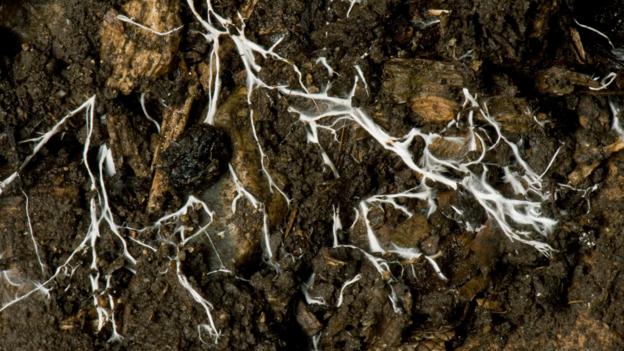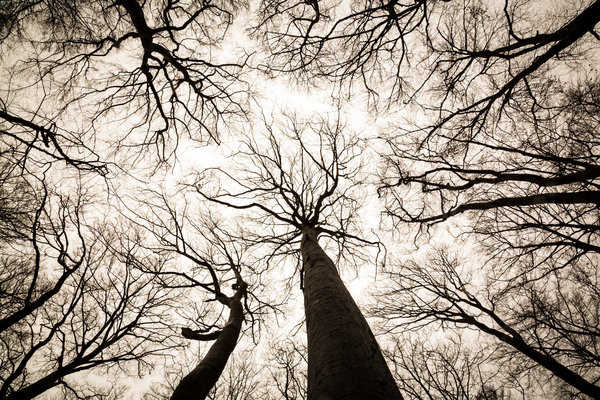
Figure 1. Branching threads of Fungus in organic Soil. Nigel Cattlin Photo.
Considering this weeks topics of Biomedia and Communication and notions of interconnectivity, I was intrigued to delve a bit more into the imagery of trees, fungi and other plants that communicate through the mycelia.
Writer Bruce Clarke suggests that the effect of communication lies in the creation of a state of consensus, whereby individuality transcends beyond meaning, time and space (CTMS, pg. 139). Similarly, Nic Fleming in Plants Talk to Each Other Using an Internet of Fungus, discusses how fungi communicate through mycelium threads (See Fig. 1) that link roots, trees and other plants together in an underground internet of sorts (Fleming, 2014). The mycelia also share information, nutrients and colonizes the roots of the other plant structures. Fungi are an organized system that lives in a state of consensus, and are also an example of what theorist Niklas Luhmann calls a system, “that is the ongoing product of its own environment” (CTMS, pg. 142). Or further, I might add, an organic, psychic being, that processes and informs other life forms in a collaborative, social system.

Figure 2. Social Trees, Gordon Welters Photo, New York Times, 2016.
Park Ranger and author Peter Wohlleben’s in The Hidden Life of Trees, observes that “trees operate less like individuals and more as communal beings, working together in networks and sharing resources, [to] increase their resistance” (McGrane, 2016). His ideas are particularly important to this discussion of connectivity, offering an anthropomorphic perspective of the forest inhabitants possessing social networks (see Fig. 2). Wohlleben perhaps iterate’s more poetically the notions that systems pulsate, select information from internal memory, and deliberate a course of action (CTMS, pg. 142-143), such as sharing resources and nutrients to help another growing plant or tree. For me (possibly romanticized a bit), trees and fungi are wondrous examples of collective consciousness and their ability to cohabitant organically and intrinsically together.
Works Cited
Fleming, Nic. “Plants talk to each other using an internet of fungus.” BBC Earth. Last accessed 27 February 2015 (2014).
McGrane, Sally. “The New York Times.” German Forest Ranger Finds That Trees Have Social Networks, Too. The New York Times, 29 Jan. 2016. Web. 01 Feb. 2016.
Mitchell, WJ Thomas, and Mark BN Hansen, eds. Critical terms for media studies. University of Chicago Press, 2010.
Works Consulted
Wohlleben, Peter. Hidden Life of Trees: What They Feel, How They Communicate. S.l.: Greystone, 2016. Print.
Add yours Comments – 1
I am all for romantic notions! How can we not be affected by the idea that non-human actors like trees and fungi are in communication with one another? What is interesting for me is how the natural, biological functions of these non-humans works as metaphor for other technological-computational-non-human actors that drive the internet and internet-mediated communications. How does Dr. Simard’s work help us to understand the world of algorithms all around us? Or does her work compel us to think of our networked society as an agentive entity, one that is naturalized, rather than one created by humans with real social, political, and economic motives?